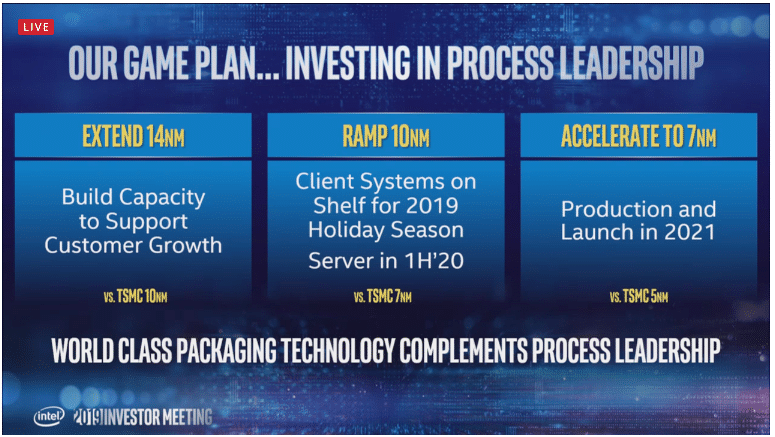It’s no secret that Intel has had major problems getting a working 10-nanometer technology. From having world-leading manufacturing techniques, that margin has shrunk year by year. In the autumn of 2018, Intel was run over for the first time when TSMC’s customers Apple and Huawei launched circuits on the company’s technology 7 nanometers.
During the summer, it’s finally time for Intel to launch large – scale products manufactured at 10 nanometers, which offers transistor density more or less on a par with TSMC’s 7 nanometers. It is then about Ice Lake with the architecture Sunny Cove, which first takes laptops.
However, the technology is greatly delayed and the rest of the industry is already in full swing to take the step to what they call 5 nanometers. During a conversation with investors, Intel goes out for the first time in years with concrete plans on the manufacturing side and the company promises a big leap to make up for lost time.
First, Intel begins by talking about the original plans, which meant that the 10-nanometer technology released first this year from the beginning was intended for 2016. The technology was first intended to offer 2.7 times higher transistor density, this thanks to new technologies such as Self -Aligned Quad Patterning (SAQP), Contact over Active Gate (COAG) and the use of cobalt instead of copper. In addition, new packaging technologies such as EMIB and Foveros were planned.
Intel admits once again that the company aimed too high with the new technology, where the idea was to take a giant shot from 14 nanometers. The company is now developing that the goals were not clearly defined internally, that the project was too complex and that the handling of the problems was handled in a bad way.
With the result in hand, the delay was about three years, but in the future Intel again aims to deliver a new or a noticeably improved technology annually. In 2020, what is called 10nm + with improved performance and energy efficiency will be released, while 10nm ++ with further optimizations will be released with products in 2021.
In parallel with the work on the new technology, a separate work team at Intel has worked on a generation called 7 nanometers, with which Intel promises transistor density in class with TSMC’s upcoming 5 nanometers. The launch will take place in the same year as 10nm ++ and is probably why Intel will let 10 and 7 nanometers live in parallel with their respective new circuits for a longer period of time.
At 7 nanometers, Intel is aiming for a more conservative doubling in transistor density instead of closer to a tripling. Among the news that is mentioned is the use of Extreme Ultraviolet Lithography (EUV), a technology that reduces the number of steps in production, which helps to shorten lead times and not least reduces costs. At the same time, the technology gets fewer design rules than 10 nanometers, which also contributes to reduced costs and makes it easier for Intel engineers.
With 7 nanometers, the use of the Embedded Multi-Die Interconnect Bridge (EMIB), a cost-effective high-speed link for communication between different circuits, is also being expanded. There will also be more of Foveros where circles are stacked on top of each other. This will enable continued performance increases, primarily in data centers.
Intel also reveals that the product that paves the way at 7 nanometers will not be a processor but a graphics card in the upcoming Xe family. This will be launched in 2021 and will use the technology Foveros, where several circuits with different manufacturing techniques are stacked on top of each other. It is likely that the calculation units themselves are manufactured on 7 nanometers, while things such as memory controls and cache memory may be manufactured on older technologies.
At the same time, it appears that what Intel calls High-Volume Manufacturing (HVM), ie manufacturing in larger volumes, with 7 nanometers will be delayed until 2022. A reasonable assumption is thus that the first consumer-oriented products with the technology are about three years away in time.
Source: Anandtech, Anandtech















